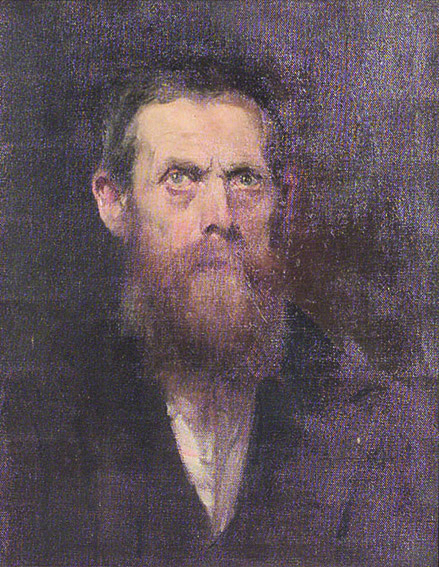
Eugene de Blaas
Austrian Painter
1843 - 1931

Eugene de Blaas was born July 24, 1843 at Albano, near Rome, to Austrian parents. His career was enriched by a talented and artistic family. His father, Karl (1815-1894), was one of the most notable portrait painters of Roman society, a successful history, portrait and fresco painter of the late Biedermeier period. He became teacher to Eugene and his brother Julius (b.1845), an artist in his own right who specialized in animal and military scenes. Karl eventually took a position as a professor at the Academies in Vienna and Venice, then part of the Austro-Hungarian Empire. It was in Venice that Eugene de Blaas established himself as the leading painter of Venetian genre. Venice had been an essential stop on the Grand Tour since the early eighteenth century. Past visitors had returned home with views and portraits and the late-nineteenth century visitor wanted more. The affluent Venetian visitor wanted human interest, a sense of life by the canals and campos of the city, and as a result a school of artists developed to supply this market. Native Italian artists like Antonio Paolettu, Antonio Rotta and de Blaas, as well as Englishmen such as Luke Fildes and William Logsdail depicted the lives of Venetian fisher folk, gondoliers and Venetian beauties.
Between 1875 and 1891 de Blaas exhibited twelve works at the Royal Academy in London. By 1885 the London art dealer Arthur Tooth and Son represented de Blaas for a short time before he moved to the rival dealer T. MacLean in 1886.
Works by Eugene de Blaas can be found in many public and private collections throughout the world, most notably in institutions in Melbourne, Sydney, Vienna, Leicester, Nottingham, Sheffield, and the Art Gallery of New South Wales.
Selected Works of Eugene de Blaas
A Helping Hand: 1884
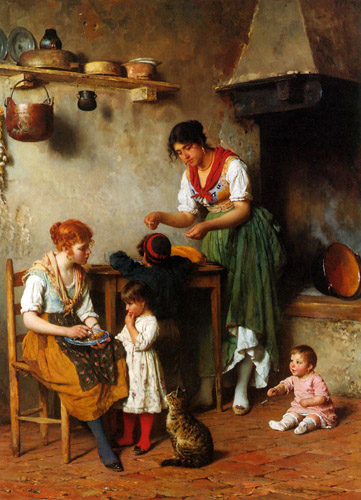
A Pensive Moment: 1896
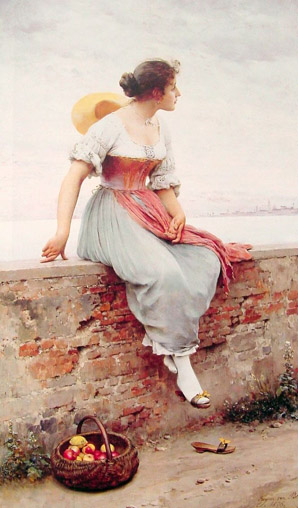
A Portrait of a Young Lady: Date Unknown
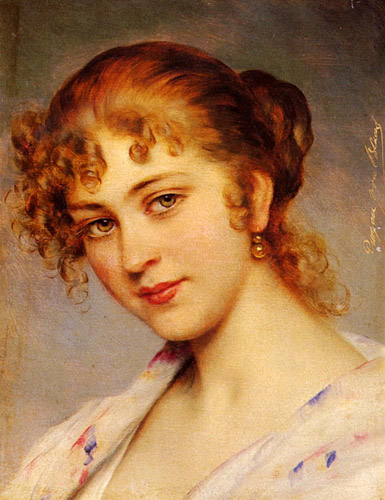
Eugene Von Blaas specialized in figure paintings. His favorite motif was the daily life of the Venetian folk. He rendered the details of their picturesque costumes and dwellings with tremendous sympathy. His precise technique and vibrant colors were greatly admired.
A Viennese Beauty: 1899
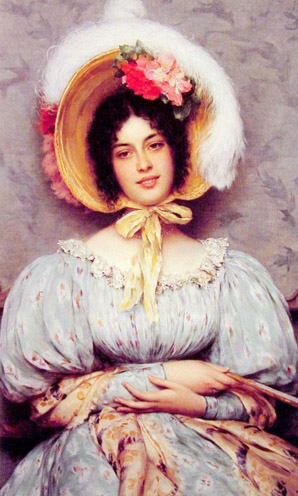
A Young Beauty: 1882
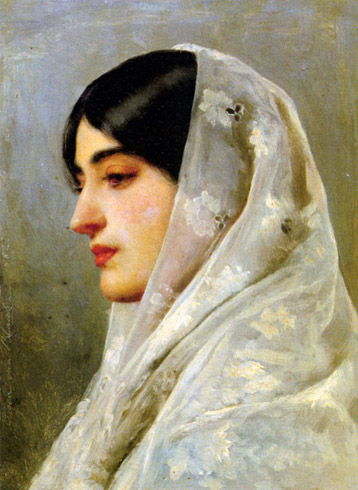
A Young Beauty: Date Unknown
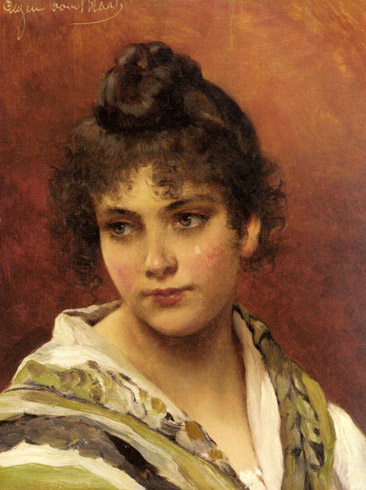
An Affectionate Glance: 1909

An Elegant: Lady Date Unknown
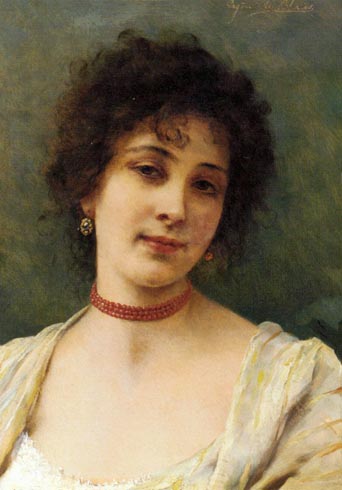
An Interesting Story: Date Unknown
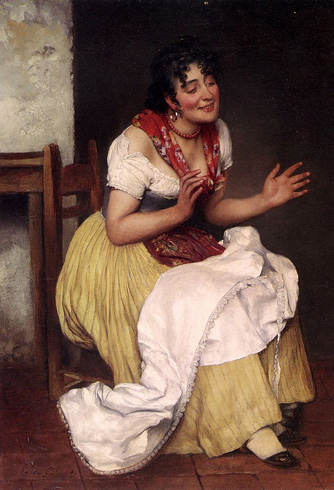
At the Well: 1872
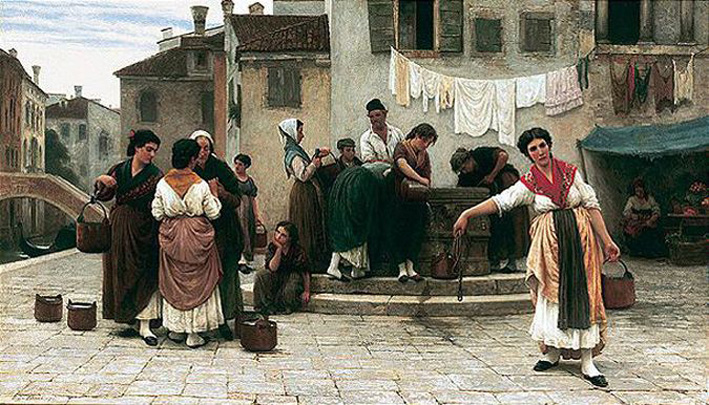
Balcony: Date Unknown
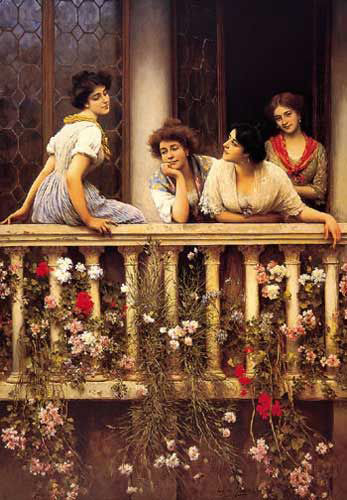
Baroness von Scholl: Date Unknown
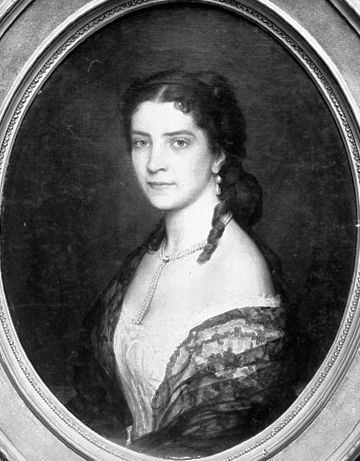
Catch of the Day: Date Unknown
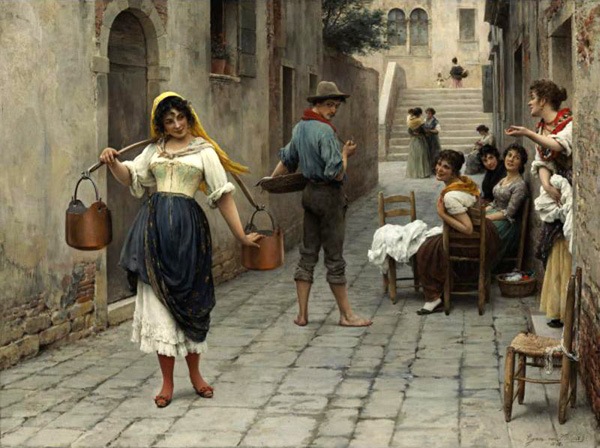
Daydreaming: 1890
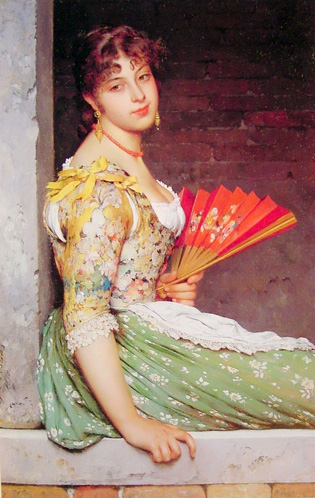
Daydreaming: Date Unknown
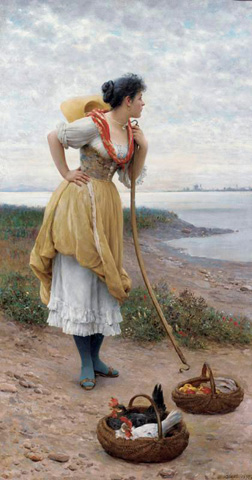
Far Away Thoughts: Date Unknown
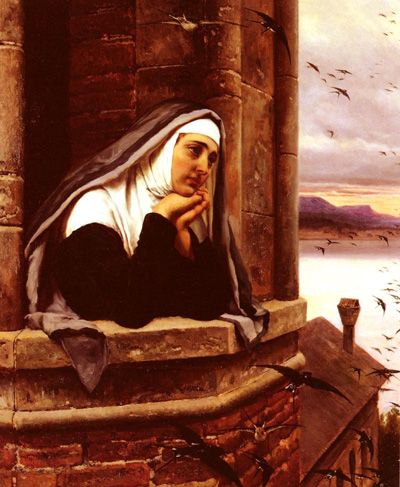
Flirtation at the Well: 1902
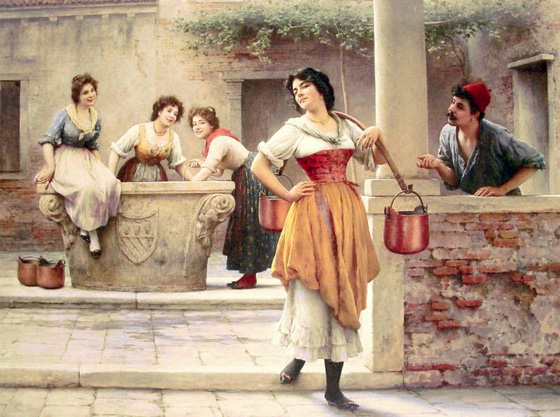
Fruit Vendor: Date Unknown
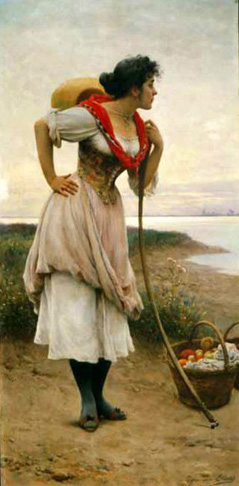
Gathering Shells: Date Unknown
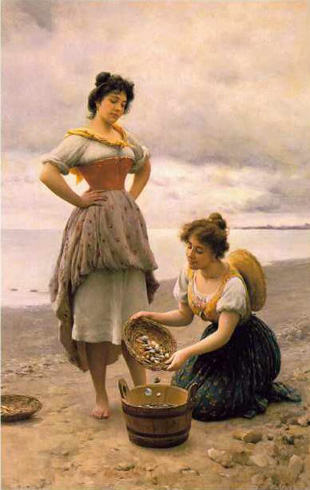
Girl with Pomegranates: 1912
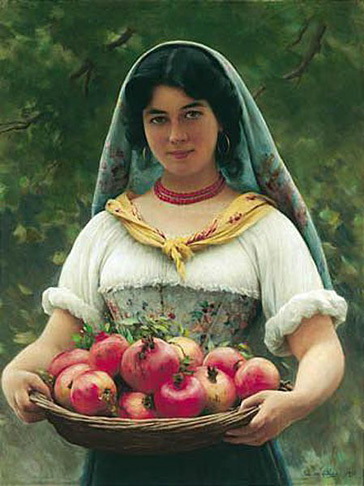
God's Creatures: 1877
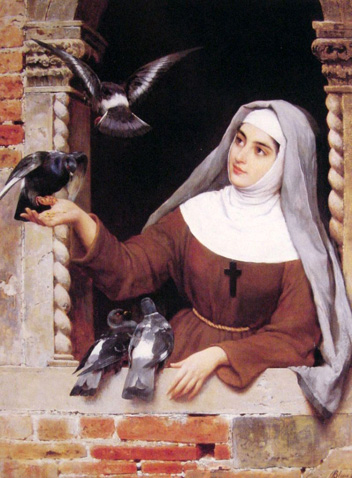
Good News: 1877
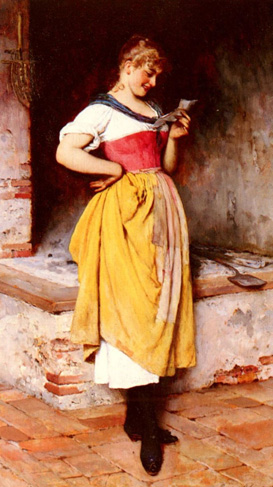
Head of a Young Boy: Date Unknown
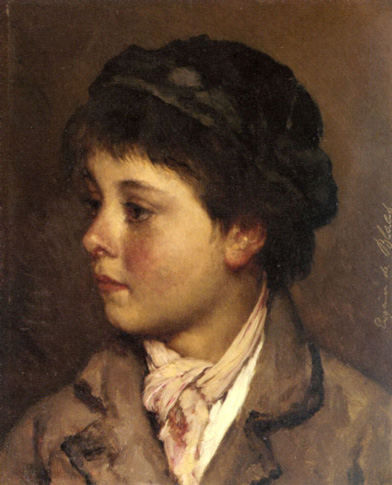
In the Water: 1914
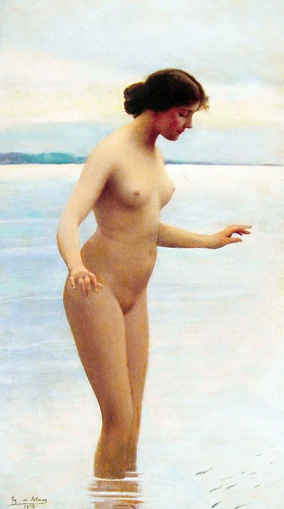
Lisa: 1889
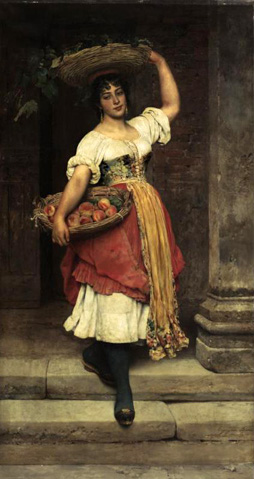
Madchenbildnis: 1850
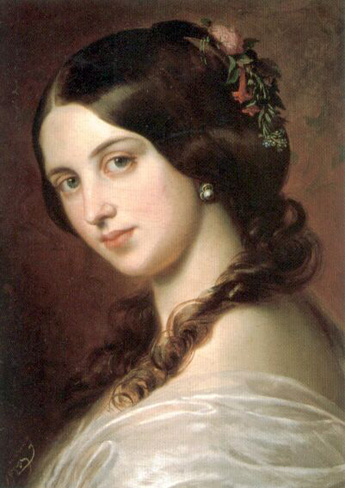
Meeting in the Square
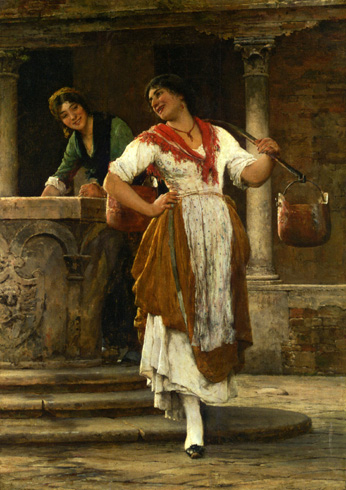
Musette: 1900
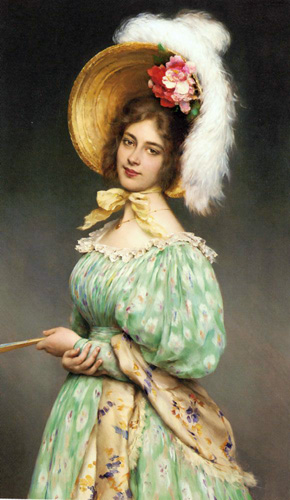
On the Balcony: 1877
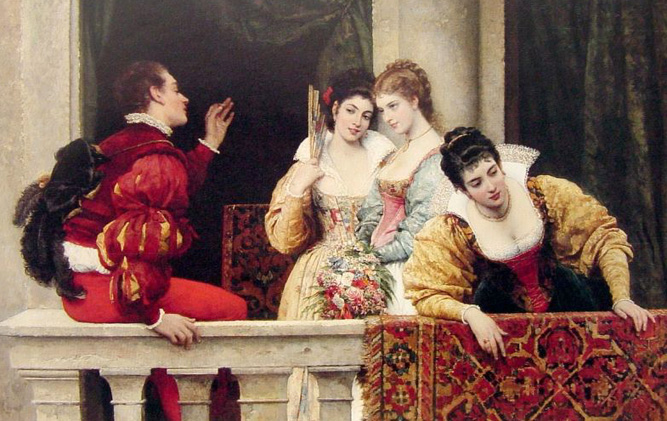
On the Balcony: 1889
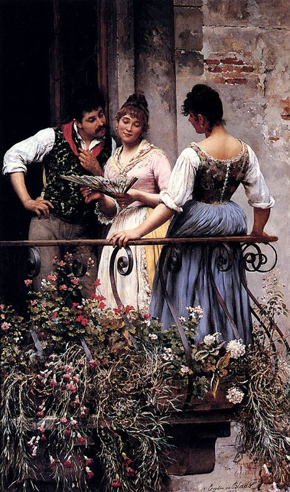
On the Beach: 1908
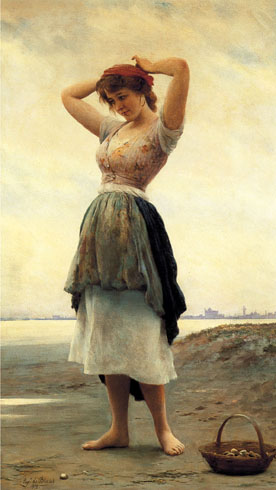
Pleasure: 1900
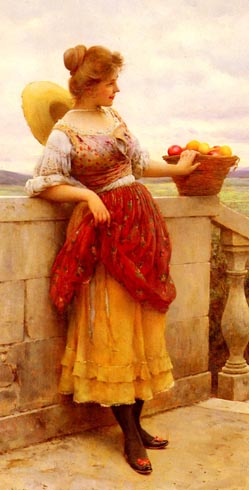
Portrait of a Boy: 1884
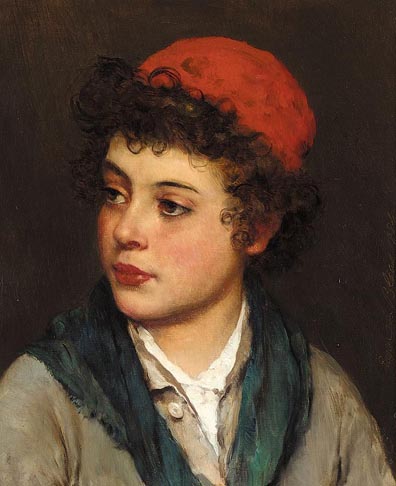
Portrait of a Lady: Date Unknown
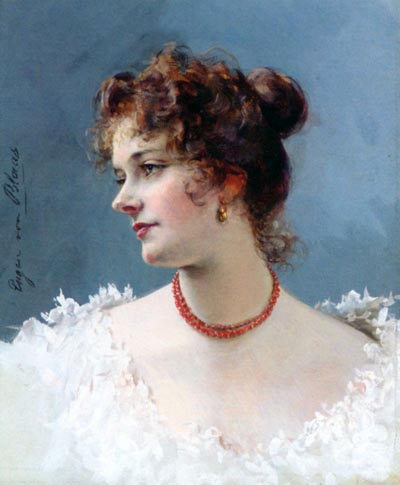
Portrait of a Venetian Lady: Date Unknown
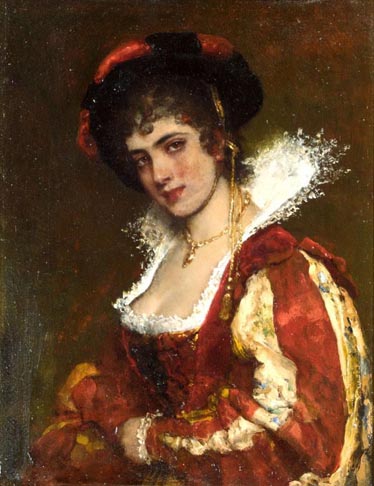
Portrait of a Woman: 1900
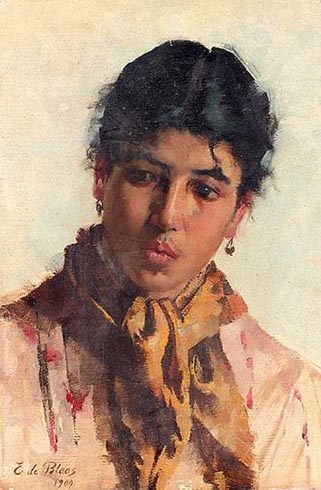
Shared Correspondance: 1899
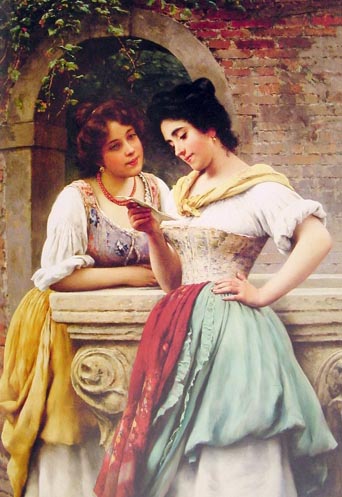
The Day's Catch
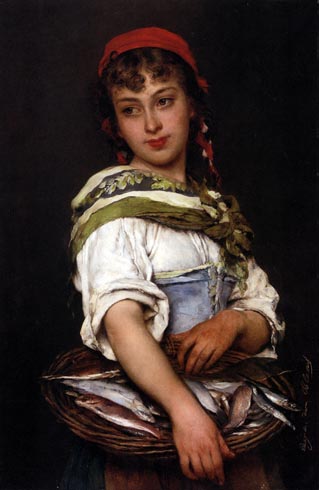
The Eavesdropper: 1906
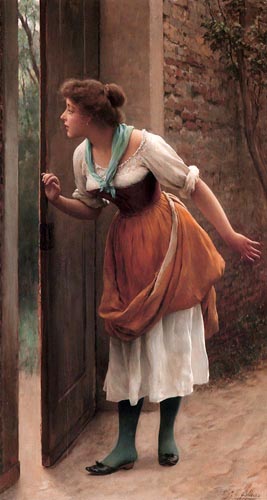
The Farewell: 1906
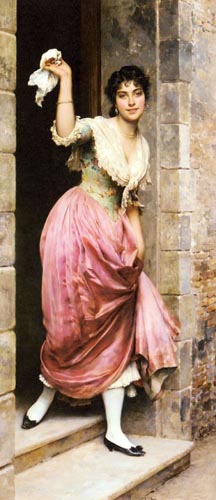
The Flirtation: 1889
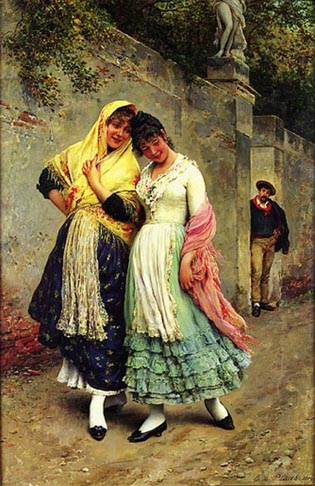
The Flirtation: 1904

The Flower Seller: Date Unknown
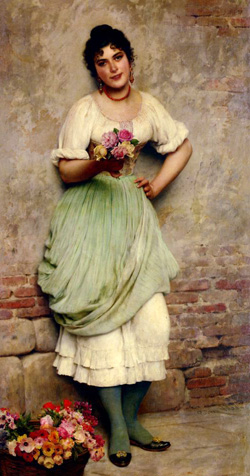
The Friendly Gossips: 1901
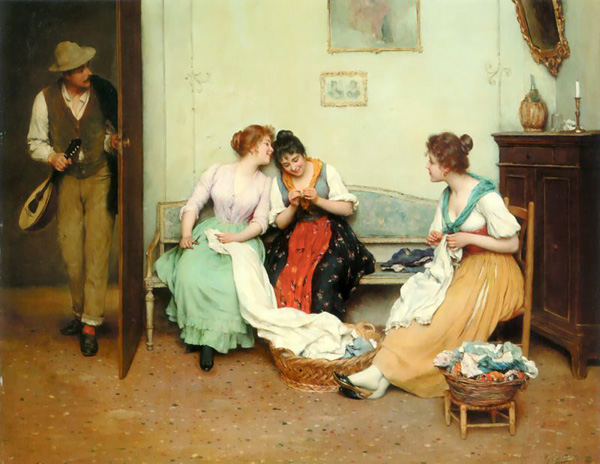
The Fruit Seller: Date Unknown
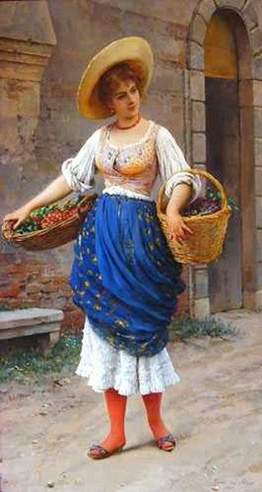
The Grape Picker: 1902

The Knitting Lesson: Date Unknown

The Love Letter: 1902

The Love Letter: 1904
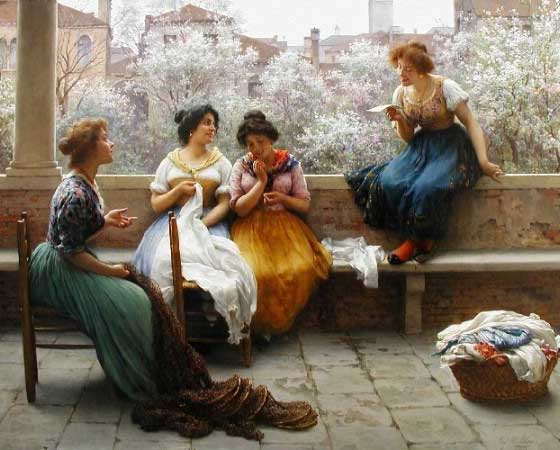
The Milkmaid: 1880
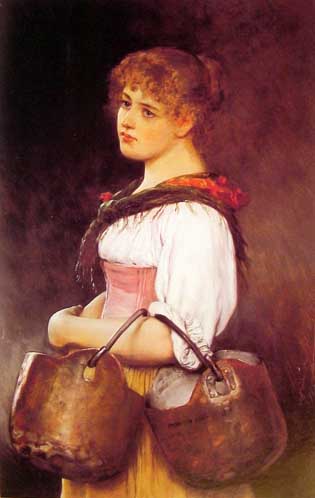
The New Suitor: Date Unknown
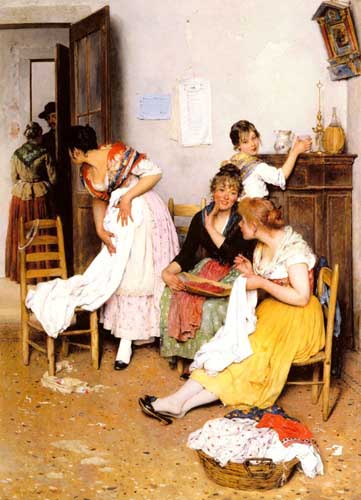
The Pearl Necklace: Date Unknown
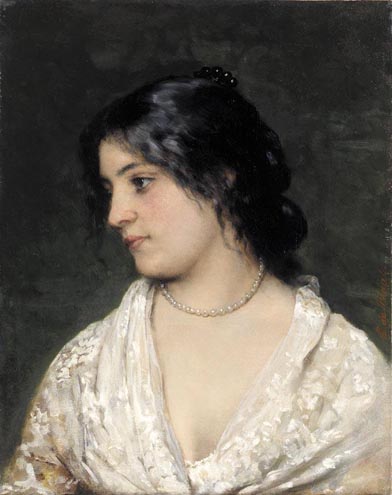
The Rose: Date Unknown
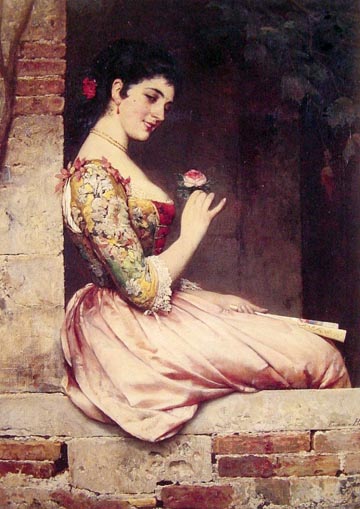
The Seamstress: Date Unknown
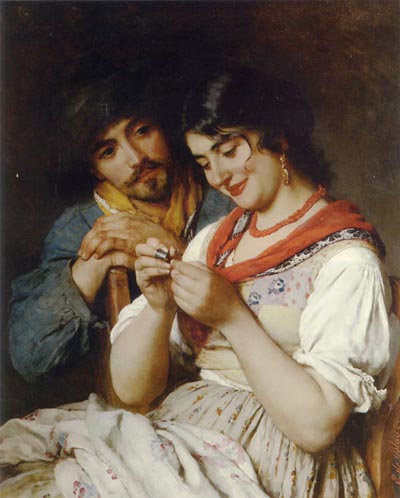
The Serenade: 1910
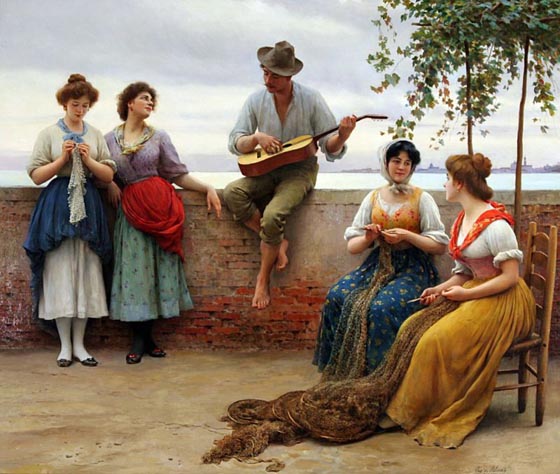
The Sweetest Rose
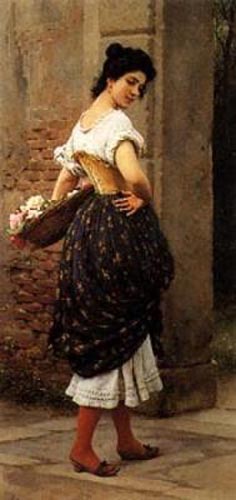
The Watercarrier: 1908

The Yellow Shawl: Date Unknown
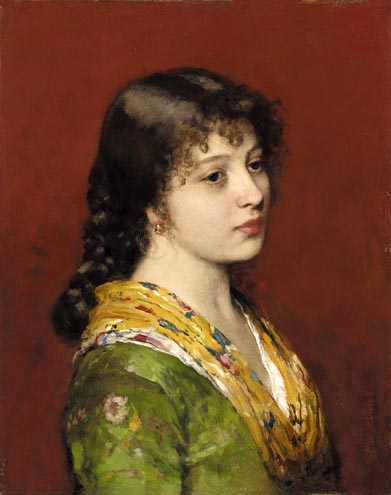
Two Children: 1899

Untitled: 1899
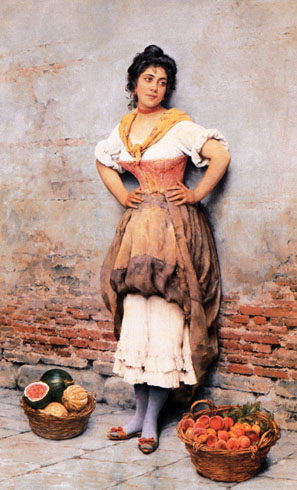
Venetian Beauty on Balcony: 1899

Venetian Flower Seller: 1895
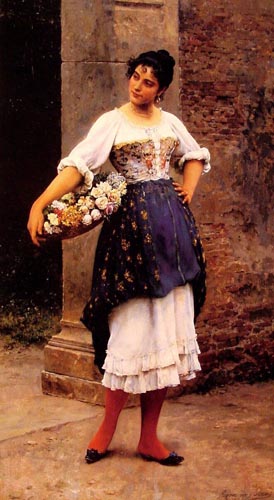
Which Came First: 1899
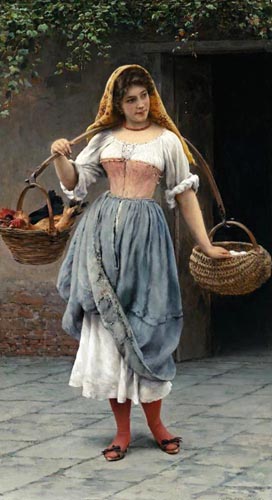
Work: Date Unknown
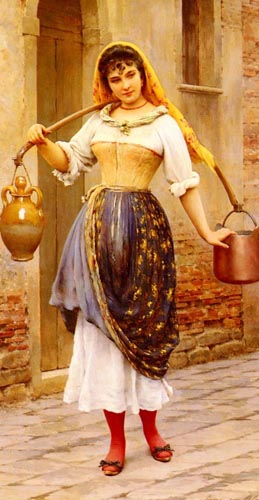
Young Italian Beauty: Date Unknown

Portrait of a Girl
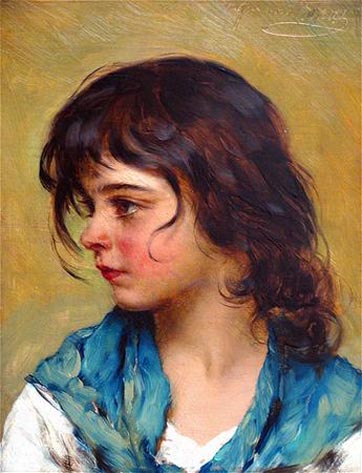
Die Gartenlaube Illustrirtes Familienblatt (later as "Illustriertes Familienblatt" and from 1938, as "Die neue Gartenlaube"), was a forerunner of modern magazines, and the first major success of the German weekly. The name means "The Garden Arbor (or Gazebo) Family Journal" but the magazine is known worldwide as "Die Gartenlaube". It was released in 1853, and by 1876 the publisher Ernst Keil had reached a circulation of 382,000 copies. One of the founders was Ferdinand Stolle. Since Die Gartenlaube was both in the common family reading, and was in numerous lending libraries and cafes as delivery was available, the estimate of the actual readership amounts to two to five million.
The format of the magazine was as 52 weekly issues, of 16-20 pages each, with some illustrations. The text, printed in a Fraktur (alt Deutsch) font, was typeset with hand-drawn illustrations and, later, with some photographs.
Die Gartenlaube provides a comprehensive and historical analysis for many fields and is an essential source for German cultural history, for example regarding the serial novels published in the magazine. The magazine was well-known in the German-speaking world: famous waltz composer Johann Strauss II even published a waltz in the magazine, during 1895, dedicated to the readers, with English title "Gartenlaube Waltz".
Quoted From: Die Gartenlaube - Wikipedia
Die Gartenlaube: (1879)
_169.jpg)
Die Gartenlaube: (1880)
.jpg)
Die Gartenlaube: (1887)
.jpg)
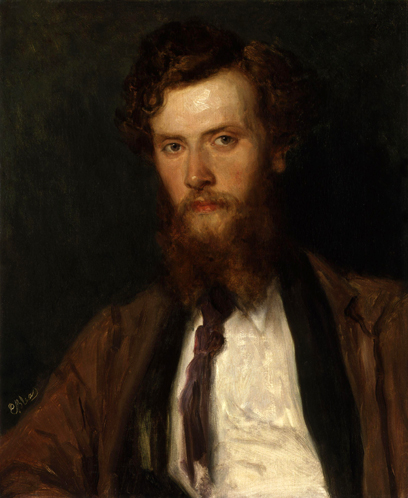
The Laundress
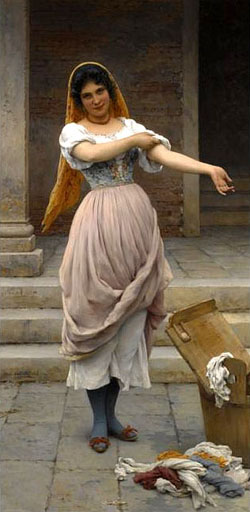
Venetian Women
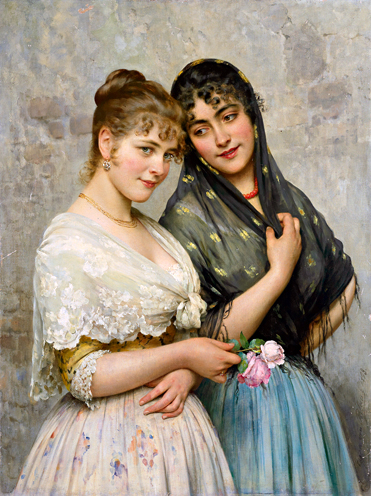
Daydreaming
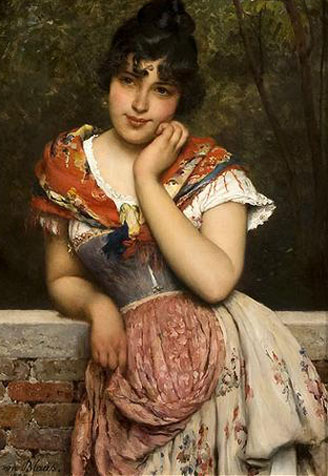
Gathering Cockles at the Seashore: Date Unknown
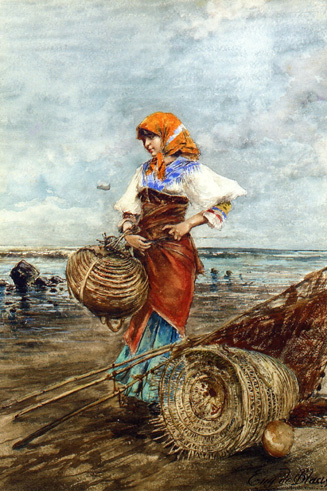
The Laundry: 1912
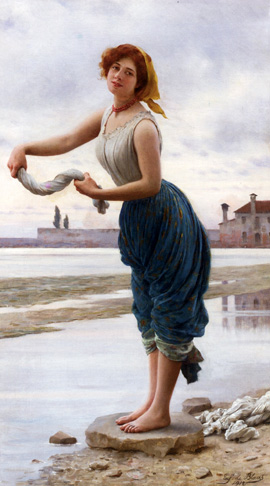
The Suitor: 1887
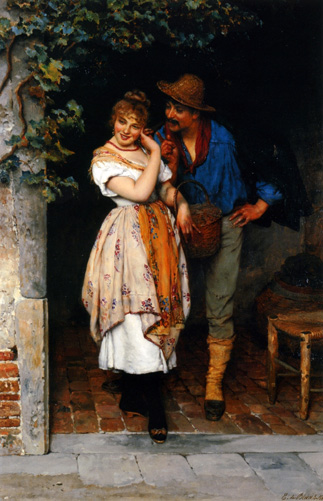
The Unseen Suitor: 1898
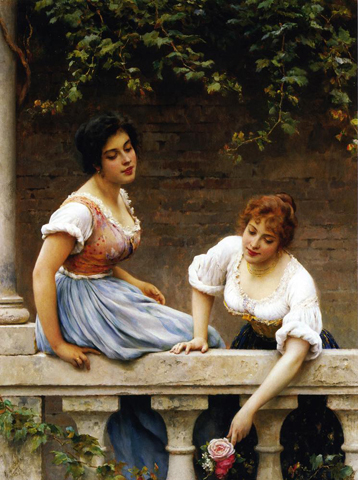
This page of Eugene de Blaas, I do not believe, is one of my better efforts which in no way detracts from the artist himself. As I have previously told you, my visitors, that I am very much an amateur and novice when it comes to any period or expression of art. Yet, I was first struck by the vibrance of the color in this artist's works. Even more importantly than that, I can feel a simplicity in his subjects that awakens a hopefulness which we too often seem to have lost in our cynicism. There is also a certain earthiness in some of his paintings especially in the 'Watercarrier' that brings a deeper sense of reality to what Eugene de Blaas, I believe, is attempting to depict.
Senex Magister
Source: Art by Eugene de Blaas - Museum Syndicate
Source: Eugene de Blaas Online
Source: Art Renewal Center
Return to Pagina Artis
Return to Bruce and Bobbie's Main Page.